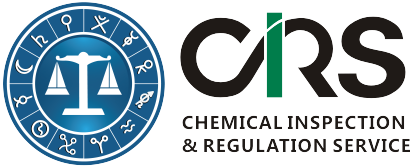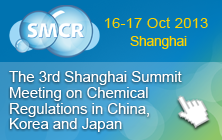
New EU Biocidal Products Regulations (BPR) and Treated Articles
The EU Regulation (EU) No 528/2013 concerning the making available on the market and use of biocidal products (BPR) was finally published on 27 June 2012 in the Official Journal of the European Union (EU). This new regulation will apply from 1 September 2013 and will replace the old biocidal products directive (BPD) in EU. Upon it entering into force, the regulation will bring great changes to how biocides and biocide treated articles are regulated in the EU.
The key principle is that treated articles should not be placed on the EU market unless all active substances contained in the biocidal products with which they were treated or which they incorporate are approved for use in BPR. In addition to this, biocide treated articles require additional labeling under BPR.
Companies who are placing articles (such as textile products, furniture etc) on the EU market must receive information from their suppliers regarding whether their articles have been treated by biocides. If yes, companies need to know which biocides have been used for treatment and then make a decision regarding whether to stop selling treated article or re-label treated articles appropriately according to BPR.
What is New?
25 June 2013, CIRS launches a training course on the new EU Biocidal Products Regulation (BPR) and treated articles for Chinese suppliers. For more info about this event, please click here.
Definitions of Biocidal Product and Treated Article
According article 3 of BPR, a biocidal product means
- Any substance or mixture, in the form in which it is supplied to the user, consisting of, containing or generating one or more active substances, with the intention of destroying, deterring, rendering harmless, preventing the action of, or otherwise exerting a controlling effect on, any harmful organism by any means other than mere physical or mechanical action.
- Any substance or mixture, generated from substances or mixtures which do not themselves fall under the first indent, to be used with the intention of destroying, deterring, rendering harmless, preventing the action of, or otherwise exerting a controlling effect on, any harmful organism by any means other than mere physical or mechanical action.
“Treated article” means any substance, mixture or article which has been treated with, or intentionally incorporates, one or more biocidal products. It shall be noted that a treated article that has a primary biocidal function shall be considered a biocidal product.
The following products might fall within the scope of treated articles under BPR:
- Furniture coated with antiseptic paint;
- Textile products claiming to have antibacterial properties;
How to Comply with BPR
EU manufacturers and distributors, who are involved in the business of treated article, shall ensure that all treated articles placed on the EU market should contain only approved active substances. They are also obligated to provide a label containing specified information (see next paragraph).
Non EU exporters and manufacturers, who export treated articles into EU market, shall ensure that the active substances contained in the biocidal products with which their products are treated are approved for use in EU. They are obligated to communicate this information to their customers and provide a label containing specified information (see next paragraph).
Requirement on Treated Article
In accordance with Article 58, the person responsible for placing a treated article on the market shall or are required to ensure that the label provides certain specified information, where:
- in the case of a treated article containing a biocidal product, a claim is made by the manufacturer of that treated article regarding the biocidal properties of the article, or
- in relation to the active substance(s) concerned, having particular regard to the possibility of contact with humans or the release into the environment, the conditions associated with the approval of the active substance(s) so require.
The label must provide/ display the following information:
(a) a statement that the treated article incorporates biocidal products;
(b) where substantiated, the biocidal property attributed to the treated article;
(c) without prejudice to Article 24 of Regulation (EC) No 1272/2008 (CLP) concerning alternate names used to preserve confidentiality, the name of all active substances contained in the biocidal products;
(d) the name of all nanomaterials contained in the biocidal products, followed by the word "nano" in brackets; and,
(e) any relevant instructions for use, including any precautions to be taken because of the biocidal products with which a treated article was treated or which it incorporates.
The above labeling requirements do not apply where at least equivalent labeling requirements already exist under sector-specific legislation.
The supplier of a treated article shall/ must/ is required to, where a consumer so requests, to provide that consumer, within 45 days, free of charge, with information on the biocidal treatment of a treated article.
The labeling shall be clearly visible, easily legible and appropriately durable. Where necessary because of the size or the function of the treated article, the labeling may be printed on the packaging, on the instructions for use or on the warranty in the official language or languages of the Member State of introduction, unless that Member State provides otherwise. In the case of treated articles that are not produced as part of a series but rather designed and manufactured to meet a specific order, the manufacturer may agree on other methods of providing the customer with the relevant information.
Transitional Period Concerning Treated Articles
The transitional period concerning a treated article depends on whether an active substance(s) contained in the biocidal products with which an article is treated is/are listed in Annex I of the BPD.
There are two circumstances as follows:
1, In the case where an active substance is listed in Annex I of BPD, the treated article can continue to be placed on the market.
2, In the case where an active substance was notified for the relevant product type and the decision on Annex I inclusion is still pending; the treated article can stay on the market until the date of a decision. If the active substance is approved and listed in the Annex I, the treated article can continue to be placed on the market. If the active substance is not approved, the treated article will no longer be permitted to be placed on the market 180 days after such a decision or as of 1 September 2016, whichever is the later.
|
Situations |
Transitional Period |
|
1 |
Listed in annex I |
Continue to be placed on EU market |
|
2 |
Pending |
Stay on market until the date of decision |
Approved, continue to be placed on EU market |
Not approved, stay on market until 180 days after the decision or as of 1 September 2016, whichever is the later. |
|||
Our Services
- Training and consultancy on new BPR;
- Determining whether an article falls within the scope of biocide treated article;
- Checking whether an active substance is approved for use in Europe;
- Labelling advice;
About the Author
David Wan graduated from Zhejiang University with Master Degree in life science. He has developed 4 years of consulting experience in chemical regulatory compliance, particularly in areas such as EU REACH, pesticide and biocide regulation compliance in China & Europe.
Contact
- Mr David Wan, China Office
11F Building 1, Dongguan Hi-Tech Park, 1288 Chunbo Road, Binjiang District, Hangzhou 310052, China
Tel: +86-571 8720 6555 | Fax: +86-571 8720 6533
Email: david@cirs-reach.com


